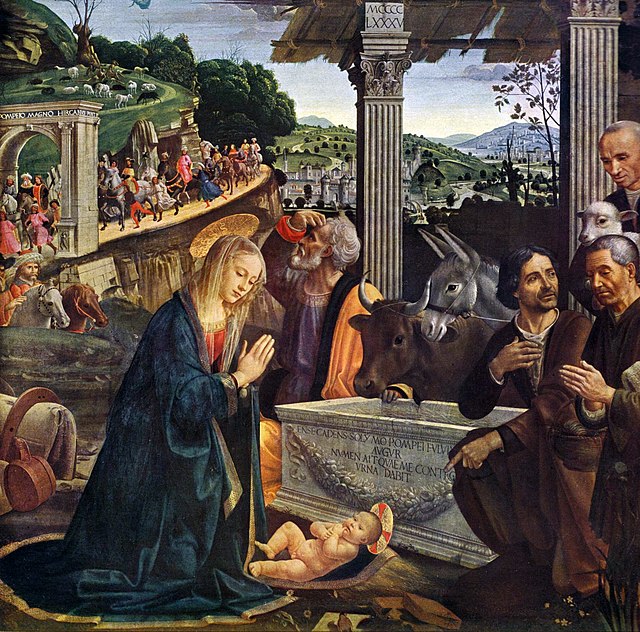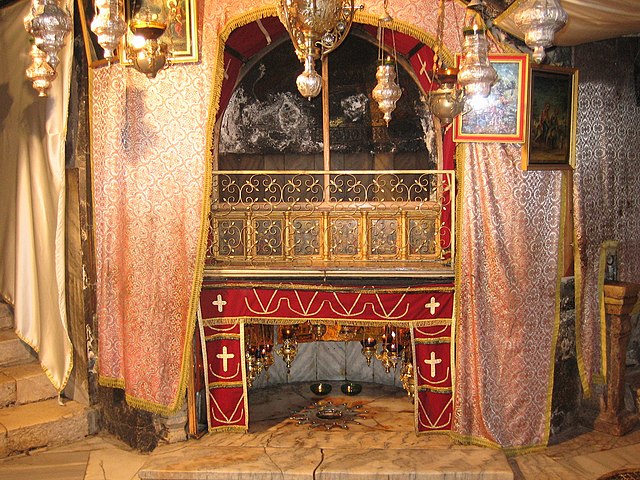Adoration of the Shepherds
The Adoration of the Shepherds is an episode in the story of Jesus's nativity in which shepherds are near witnesses to his birth in Bethlehem, arriving soon after he is actually born. It is recounted, or at least implied, in the Gospel of Luke and follows on from the annunciation to the shepherds, in which the shepherds are summoned by an angel to the scene of the birth. Like the episode preceding it, the adoration is a common subject in art, where it is often combined with the Adoration of the Magi. In such cases it is typically just referred to by the latter title.
Adoration of the Shepherds by Domenico Ghirlandaio, 1485
Adoration of the Shepherds by Giorgione, 1510
The Adoration of the Shepherds by El Greco, c. 1605–1610
Adoration of the Shepherds by Matthias Stom, c. 1635–1640
The nativity of Jesus, nativity of Christ, birth of Jesus or birth of Christ is documented in the biblical gospels of Luke and Matthew. The two accounts agree that Jesus was born in Bethlehem, Judaea, that his mother, Mary, was engaged to a man named Joseph, who was descended from King David and was not his biological father, and that his birth was caused by divine intervention. Some scholars do not see the two canonical gospel nativity stories as historically factual since they present clashing accounts and irreconcilable genealogies. The secular history of the time does not synchronize with the narratives of the birth and early childhood of Jesus in the two gospels. Some view the question of historicity as secondary, given that gospels were primarily written as theological documents rather than chronological timelines.
Adoration of the Shepherds by Dutch painter Matthias Stomer, 1632
A page from the 11th-century Bamberg Apocalypse showing Matthew 1:21
Angel Gabriel's Annunciation to Mary, by Murillo, c. 1660
Altar in the Church of the Nativity, Bethlehem








